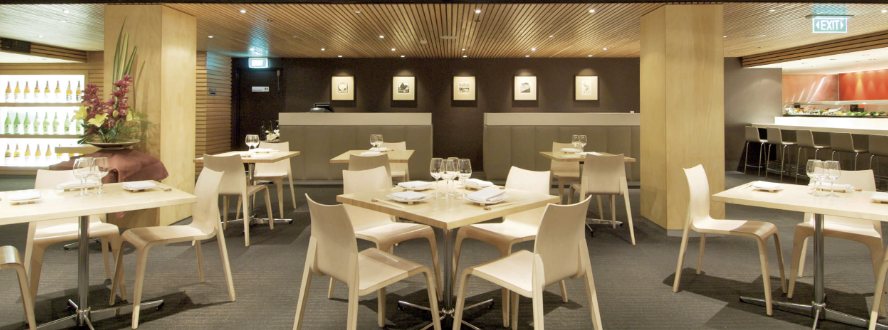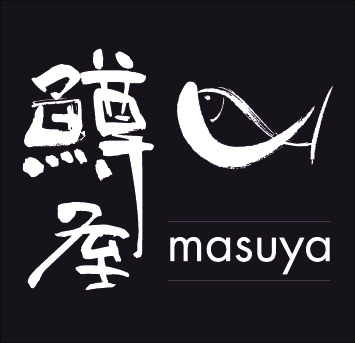About Masuya’s People
Development and Systems

Management
At Masuya, we develop management skills step by step based on five pillars: sales, cost control, goal setting, operations, and team communication.
▼ Five indicators (common to floor and kitchen)
-
Sales
Sales are a mirror of how much we delighted our customers. We analyze “Why did it grow today? Why was it lower?” and, while generating ideas—such as menu development, promotions, communication with service staff, pairings with wine and sake, and various events—we work with each store to turn these into improvements.
-
Cost (cost control)
Cost awareness is an important foundation for keeping the restaurant going for the long term. As a guideline, we aim to keep the combined total of food, drinks, and labor at roughly within 70%. On top of that, we check seasonal ingredients and market trends and develop dishes that make use of what we procure. We also actively incorporate improvements in HR and retention, as well as cost management methods learned from other industries.
-
Target (goal setting and execution)
Goals are signposts indicating where the store is headed. In addition to numerical targets such as sales and customer acquisition, we also set qualitative goals such as “improving customer satisfaction” and “success of new menus.” With “One Staff, One Mission,” we do not chase numbers alone; we value the learning and improvements gained during the achievement process and work together as one team.
-
Operation
Operations are the foundation of store management. Reflecting in daily reports, creating a reassuring environment through cleaning and hygiene control, stable staffing through recruitment and shift management, and managing serving times to deliver dishes and drinks at the optimal timing-by running these in good balance, we make daily service smooth and provide customers with a comfortable time.
-
Communication
Communication is the key that creates the atmosphere and teamwork of the restaurant. We coordinate among leadership, multiple locations, in-store sections, suppliers, and the business management office, and move forward while frankly conveying what is necessary. Including staffing and development, we strengthen the team’s capability through constructive interaction.

Operations and Roles
Floor section
At Masuya, we use a table-responsible system in which the staff in charge handles everything consistently – from situational awareness to proposal.
-
Manager
Oversees sales management, planning/operation of monthly promotions, and recruitment/development.
-
Reception
As an assistant to the manager, supports planning for marketing, recruitment, and numerical management.
-
Sommelier
Proposes wines matched to each table; introduces five Japanese sake labels that change every month. Also handles drink preparation, development of new menus such as seasonal mocktails, training of floor staff, and planning/operation of monthly promotions.
-
Food Runner
Provides cross-table support and shares customer requests and insights gained from conversations with the kitchen.
Kitchen
Each section collaborates to balance quality and speed.
-
Control Section (Head Chef / Second / Leader)
Commands overall, manages serving times, checks quality, and performs final plating checks.
-
Grill
In charge of dishes where the precision of heat determines the taste, such as Australian Wagyu steak and grilled fish. Also prepares various sauces.
-
Deep-fry
Responsible for tempura and fried items, keeping freshly fried texture and temperature.
-
Sushi-roll / Sashimi / Nigiri (sushi section)
Each specialist handles rolls, sashimi, and nigiri, providing plates that showcase freshness and technique.
Training System
Office Training
- English training
Many staff members “want to acquire English.” By combining the practical setting of daily customer service with English lessons as input, they can naturally acquire the high-quality customer care our company seeks.
- Input of knowledge on wine and Japanese sake
Understand the characteristics by label and style, and refine pairing and proposal skills for customers.
Restaurant Training
- Service design from the customer’s point of view: Improve service skills while understanding why a given response is necessary.
- Learning and improving menus through staff meals: Cultivate an atmosphere and mechanism where people can learn on their own and turn ideas into shape.
- Development of “professionals”: Because we work in an environment with multi-ethnic staff, through commitment to ingredients and event planning, we can learn differences in food culture and service. Westerners, Chinese, Japanese, Koreans, etc. – what customers seek differs by group, and by understanding these differences, the breadth of service expands. At Masuya, you can feel diversity firsthand and grow as a professional.
Video Training
Visualize on-site speed and operational procedures via video, and improve precision and efficiency through repeated learning.
Fish Market Training (for chefs)
Gather at 8:00 AM, check the day’s fish situation over coffee, and make purchases. Consider menus suitable for sushi and grilled dishes on the spot. In the meeting after the training, acquire management skills starting with cost control. The owner also directly shares business style and the ethos cultivated over more than 30 years.
Examples of learning themes
- Understanding cold-chain cost cuts starting from logistics and freezing technologies
- Utilizing ingredients, networks, and information obtained from suppliers
- Understanding and using management numbers
Grade System
At Masuya, the skills and roles required for each position are clarified, and Grades are set according to experience and proficiency. The numbers do not indicate superiority or inferiority; they are a guide for “where to start growing.” No matter which position you start from, you can steadily hone your skills through experience and training and step up.
-
Grill (Grade 4–)
Handles meat dishes and grilled fish where heating technique is key (chefs with 3–4 years of experience)
-
Sushi Bar (Grade 5)
Uses fish selection and nigiri techniques (operations capable of increasing customers)
-
Sashimi (Grade 3)
Balances beautiful cutting with speed
-
Roll (Grade 2–)
Provides uniform rolling and plating proposals
-
Reception (Grade 3–)
Reservation management and guest reception, management support, recruiting, marketing, promotions, etc.
-
Table Captain/Lead (Grade 3–)
Leads overall customer service
-
Bar (Grade 2–)
Starts from the basics of drink preparation and new menu development
※ Our Grade 3 represents a personnel level that can hold their own even at top-tier restaurants in Australia.
※ Staff with limited experience generally start from Grade 1 and aim to grow while experiencing all sections.
Pay and Promotion System
We clarify the skills and roles required for each section and conduct regular evaluations. We visualize technique and results through numbers and behaviors and reflect them in promotions and pay raises. Not only technical aspects but also contribution to the team and proposal ability are included in the evaluation.
